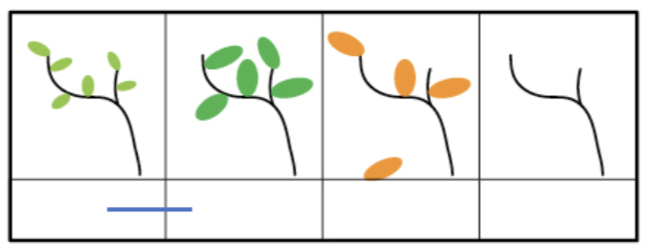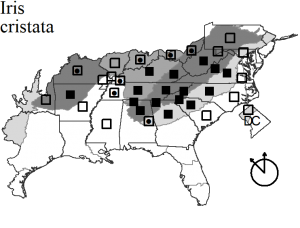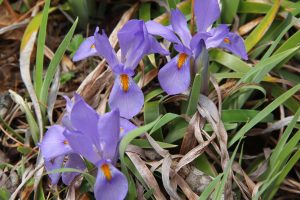Iris cristata
Dwarf crested iris
Iridaceae
Iris Family

Hundreds of Iris species are found throughout the north-temperate zone, presenting such an astonishing range of hues that Linnaeus was inspired to name them after the Greek goddess of rainbows. Peter Collinson is credited with introducing this particular Iris to England in 1756, although undoubtedly through the offices of John Bartram. Tellingly, the celebrated botanical artist Georg Dionysius Ehret (1708-1770) labeled his painting of Dwarf crested iris the “Pittsburg Iris from P. Collinson,” dated May 24, 1767 — a Pennsylvania connection that suggests Bartram collected it.
Iris flowers have a remarkably intricate structure with parts in threes: three showy sepals and petals, three modified pistils with petal-like arms, each of which arch over the sepals and hide the three stamens. The flower is iconic, especially as the stylized fleur-de-lis (though this translates as “flower of the lily”). The flowers are lilac or lavender with gold “crests” on the sepals — hence cristata, crested. These develop into capsules of small seeds with a corkscrew-like filament, an elaiosome that is prized by ants.

Weakley, A.S. 2020. Flora of the southeastern United States. University of North Carolina Herbarium, North Carolina Botanical Garden.

